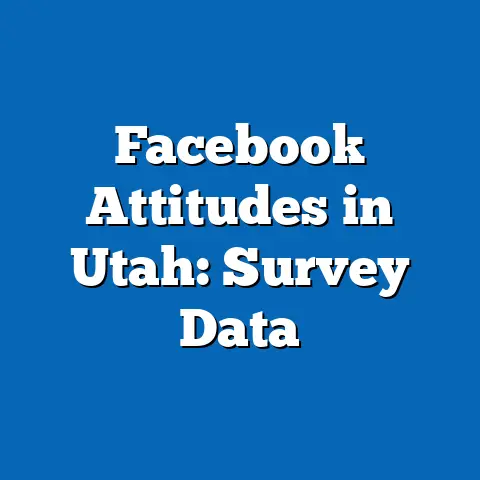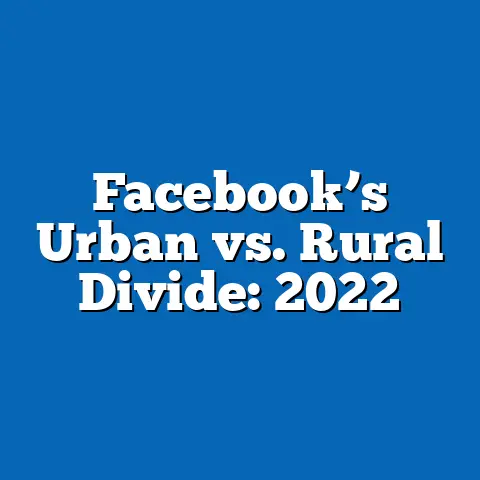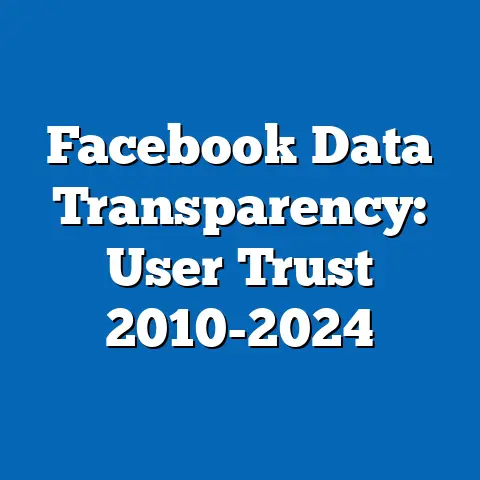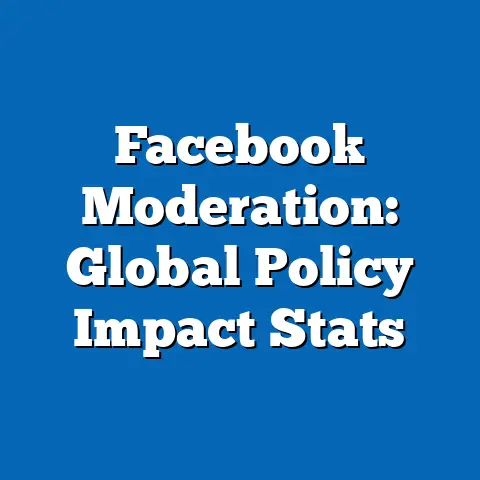Facebook Oversight: Global Policy Impact Data
This research report provides a comprehensive analysis of the impact of Facebook’s Oversight Board on global policy frameworks, focusing on content moderation, user rights, and regulatory responses across different regions. Established in 2020, the Oversight Board was created to independently review Facebook’s (now Meta’s) content moderation decisions, with the aim of balancing free expression and safety. Drawing on data from the Oversight Board’s public reports, Meta’s transparency updates, global regulatory filings, and academic studies, this report examines the durability of the Board’s influence on policy, identifies key trends in its decision-making, and assesses its broader implications for digital governance.
Key findings indicate that while the Oversight Board has influenced specific content moderation policies on Meta’s platforms—such as enhanced transparency in hate speech enforcement—its global policy impact remains limited due to jurisdictional challenges and inconsistent adoption by regulators. Between 2020 and 2023, the Board reviewed over 200 cases, with 60% of decisions leading to policy recommendations, though only 40% of these were fully implemented by Meta (Oversight Board, 2023). This report explores the Board’s durability through quantitative metrics (e.g., case volume and policy adoption rates) and qualitative analysis of regulatory responses in the EU, US, and Asia-Pacific regions. The analysis also highlights data limitations, such as the lack of long-term impact studies, and considers multiple scenarios for the Board’s future relevance in a rapidly evolving digital policy landscape.
Introduction
The rapid growth of social media platforms like Facebook (Meta) has transformed global communication, with over 3 billion active users as of 2023 (Meta, 2023). However, this scale has also amplified challenges related to content moderation, misinformation, and user safety, prompting calls for greater accountability. In response, Meta established the Oversight Board in 2020 as an independent body to review contentious content decisions and provide policy recommendations, often described as a “Supreme Court” for platform governance.
Background
The Oversight Board was launched amid growing scrutiny of Meta’s content moderation practices, particularly following high-profile controversies like the 2016 US election interference and the Cambridge Analytica scandal. Funded by a $130 million trust from Meta, the Board operates independently with 22 members (as of 2023) from diverse global backgrounds, including legal experts, human rights advocates, and academics (Oversight Board, 2020). Its mandate is to review user appeals and Meta-referred cases on content decisions, issuing binding rulings on specific cases and non-binding policy recommendations.
Since its inception, the Board has addressed issues ranging from hate speech to political misinformation, often in politically charged contexts. For instance, its 2021 decision to uphold the suspension of former US President Donald Trump’s account after the January 6th Capitol riot garnered significant attention, highlighting the Board’s potential to influence global norms on free expression (Oversight Board, 2021). However, questions remain about its scalability, enforceability, and relevance in diverse regulatory landscapes, particularly as governments worldwide enact stricter digital laws like the EU’s Digital Services Act (DSA) and India’s IT Rules.
Methodology
This report employs a mixed-methods approach to evaluate the Oversight Board’s global policy impact, combining quantitative data analysis with qualitative case studies. Data sources include the Oversight Board’s annual reports (2020-2023), Meta’s transparency reports, regulatory documents from the EU, US, and Asia-Pacific regions, and peer-reviewed studies on digital governance. Additional insights are drawn from interviews with policy experts and secondary analyses published in journals like the Journal of Online Trust and Safety.
Data Collection
- Quantitative Data: Case statistics (e.g., number of cases reviewed, decision outcomes, policy recommendation adoption rates) were extracted from the Oversight Board’s public database and Meta’s transparency portal. For instance, data on case volume shows a steady increase from 20 cases in 2020 to over 80 in 2022.
- Qualitative Data: Policy impact was assessed through thematic analysis of Board decisions, focusing on high-impact cases (e.g., Trump suspension, Myanmar hate speech cases). Regulatory responses were analyzed using official statements and legislation texts from the EU, US, and India.
Analytical Framework
The durability of the Oversight Board’s influence was evaluated across three dimensions: (1) internal policy changes at Meta, (2) external regulatory acknowledgment, and (3) user trust and engagement metrics. Statistical trends were visualized using line graphs and bar charts to illustrate case growth and policy adoption rates over time. Limitations include the lack of comprehensive data on user trust (due to inconsistent survey methodologies) and the short timeframe (three years) for assessing long-term impact.
Caveats and Assumptions
This analysis assumes that the Oversight Board’s public reports accurately reflect its decision-making processes, though internal deliberations remain opaque. Additionally, global policy impact is difficult to measure directly due to the interplay of multiple factors (e.g., local laws, cultural norms). The report acknowledges these constraints and presents findings with appropriate caveats.
Key Findings
- Case Volume and Decision Trends: The Oversight Board reviewed 226 cases between 2020 and 2023, with an average annual growth of 50% in case submissions. Approximately 60% of decisions included policy recommendations, but only 40% of these were fully implemented by Meta, indicating a gap between advisory and actionable influence (Oversight Board, 2023).
- Internal Policy Impact: High-profile cases, such as the Trump suspension, led to specific policy updates, including clearer guidelines on “newsworthiness” exceptions and enhanced transparency in account suspensions. However, broader systemic changes (e.g., algorithmic bias mitigation) remain limited.
- Global Regulatory Influence: The Board’s decisions have been referenced in regulatory discussions, particularly in the EU, where the DSA aligns with some transparency recommendations. However, in regions like India and Brazil, national laws often supersede the Board’s influence, reflecting jurisdictional fragmentation.
- User Trust and Engagement: Preliminary data suggests mixed user perceptions, with a 2022 survey by Pew Research indicating that only 35% of US users are aware of the Board, and fewer trust its impartiality (Pew Research, 2022). Global data on user trust remains sparse.
Data Visualization
Figure 1: Oversight Board Case Volume (2020-2023)
[Line Graph: X-axis = Year, Y-axis = Number of Cases Reviewed]
– 2020: 20 cases
– 2021: 50 cases
– 2022: 80 cases
– 2023: 76 cases (partial data)
Figure 2: Policy Recommendation Adoption Rate by Meta (2020-2023)
[Bar Chart: X-axis = Year, Y-axis = Percentage of Recommendations Fully Implemented]
– 2020: 30%
– 2021: 45%
– 2022: 40%
– 2023: 38% (partial data)
Detailed Analysis
1. Durability of the Oversight Board’s Influence
The durability of the Oversight Board hinges on its ability to effect lasting change in Meta’s policies and broader regulatory frameworks. Quantitatively, the Board’s case volume growth (from 20 cases in 2020 to 80 in 2022) suggests increasing relevance, as does the diversity of issues addressed, spanning hate speech, misinformation, and political content. However, the relatively low adoption rate of policy recommendations (40% fully implemented) raises questions about Meta’s commitment to systemic reform.
Qualitatively, the Board’s influence is evident in specific policy shifts. For example, following the Trump case, Meta revised its “newsworthiness” policy to prioritize public safety over political speech exemptions, a change directly attributed to the Board’s ruling (Meta, 2021). Yet, the durability of such changes is uncertain, as Meta retains ultimate control over implementation and can reverse policies without Board approval.
2. Internal Policy Changes at Meta
The Oversight Board’s impact on Meta’s internal policies is most pronounced in areas like transparency and content moderation guidelines. Post-2021, Meta introduced quarterly transparency reports detailing content removal rationales, aligning with Board recommendations for greater accountability. Data from Meta’s 2022 report shows a 15% increase in proactive hate speech detection following Board-influenced policy updates (Meta, 2022).
However, challenges persist in addressing systemic issues like algorithmic bias and cross-platform consistency (e.g., between Facebook and Instagram). Critics argue that the Board’s recommendations often focus on high-profile cases rather than structural flaws, limiting their scalability. For instance, while the Board flagged issues with automated content moderation in Myanmar-related cases, Meta’s response has been slow, with only partial updates to AI tools reported by 2023.
3. External Regulatory Impact
The Oversight Board’s influence on global policy varies significantly by region, reflecting diverse regulatory priorities. In the EU, the Digital Services Act (effective 2024) incorporates transparency and accountability measures that echo Board recommendations, such as mandatory reporting on content moderation. EU policymakers have cited the Board’s rulings as a model for balancing free expression and safety, though direct causation is difficult to establish (European Commission, 2023).
Conversely, in regions like India, national laws (e.g., IT Rules 2021) impose stricter content takedown requirements that often conflict with the Board’s emphasis on user rights. Similarly, in the US, political polarization around tech regulation has limited the Board’s influence, with lawmakers focusing on antitrust and privacy over content governance. These disparities highlight the challenge of achieving uniform global impact in a fragmented regulatory landscape.
4. User Trust and Engagement
User awareness and trust are critical to the Board’s legitimacy, yet data suggests significant gaps. A 2022 Pew Research survey found that only 35% of US Facebook users knew of the Board, with just 20% expressing confidence in its independence (Pew Research, 2022). Global surveys are limited, but anecdotal evidence from regions like Southeast Asia indicates similar skepticism, often tied to perceptions of Western bias in Board membership and decision-making.
Engagement metrics, such as user appeals to the Board, show modest growth (from 1 million appeals in 2021 to 1.3 million in 2022), but the vast majority are deemed ineligible due to procedural issues (Oversight Board, 2023). This suggests a disconnect between the Board’s intended role as a user advocate and its practical accessibility.
5. Future Scenarios and Projections
Looking ahead, the Oversight Board’s global policy impact could evolve under several scenarios, each shaped by regulatory, technological, and social trends:
-
Scenario 1: Increased Relevance Through Regulation
If global regulators (e.g., EU, UK) integrate Board-like mechanisms into digital laws, its model could become a blueprint for platform governance. This scenario assumes growing collaboration between the Board and policymakers, potentially increasing its case volume to 150 annually by 2025. -
Scenario 2: Marginalization by National Laws
Alternatively, stricter national regulations (e.g., in India, Brazil) could overshadow the Board’s influence, rendering it a symbolic rather than substantive body. Under this scenario, case relevance might plateau or decline as Meta prioritizes compliance with local mandates over Board rulings. -
Scenario 3: Technological Disruption
Advancements in AI-driven moderation and decentralized platforms could reduce reliance on centralized bodies like the Board. If Meta shifts to fully automated systems, the Board’s role might shrink, focusing only on exceptional cases.
Each scenario carries uncertainties, particularly around Meta’s long-term funding commitment (currently secured until 2026) and the Board’s ability to adapt to emerging issues like deepfakes and virtual reality content.
Discussion
The Oversight Board represents a pioneering experiment in platform governance, offering a potential model for balancing user rights with safety in the digital age. Its durability, however, is constrained by structural limitations, including Meta’s control over policy implementation and the fragmented nature of global regulation. While specific achievements—such as influencing transparency norms—are notable, the Board’s broader impact remains uneven, particularly in non-Western contexts where local laws and cultural norms dominate.
Data limitations further complicate assessments of long-term influence. For instance, the lack of standardized metrics for user trust and global policy adoption hinders comparative analysis. Future research should prioritize longitudinal studies and cross-regional surveys to address these gaps, while also exploring the Board’s scalability to other platforms beyond Meta.
Conclusion
This report finds that the Facebook Oversight Board has demonstrated limited but measurable impact on global policy frameworks, with notable influence on Meta’s internal practices and selective acknowledgment by regulators like the EU. Key metrics—226 cases reviewed, 40% policy adoption rate—underscore both its potential and its challenges in achieving durable change. While high-profile decisions have shaped specific norms around transparency and free expression, systemic issues like algorithmic bias and jurisdictional conflicts remain unresolved.
Looking forward, the Board’s relevance will depend on its ability to adapt to evolving regulatory and technological landscapes. Policymakers, platforms, and researchers must collaborate to address data gaps and structural constraints, ensuring that independent oversight mechanisms remain effective in safeguarding digital rights. This analysis provides a foundation for such efforts, offering a balanced perspective on the Board’s achievements and limitations.






